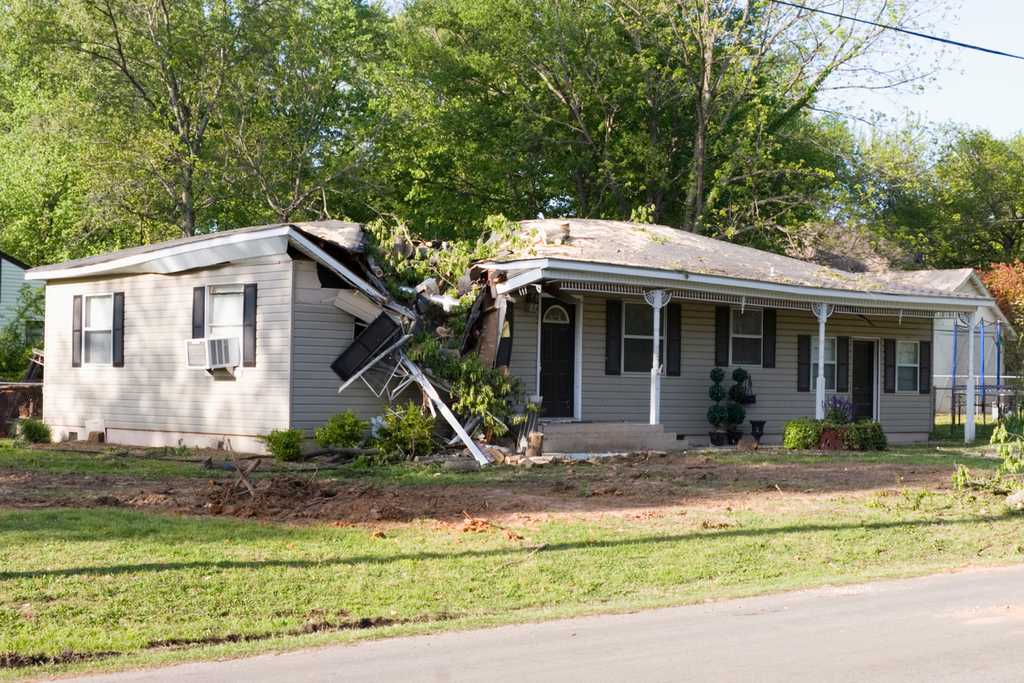A homeowner's insurance policy can help protect your home financially if your house or personal belongings are destroyed or damaged by a covered loss, or peril. Understanding your policy is important, especially what a peril is, so you know what's covered and what’s not.
What is a peril in insurance?
A peril in insurance is an event that happens which causes loss or destruction — for homeowners specifically, to your home or the property it’s sitting on. Homeowners tend to purchase insurance for their house so that they're covered by specific types of losses or damage to their property.
These types of losses are called covered perils, which can include fire, theft, and vandalism. That means if your home was damaged or destroyed by certain perils, your insurance company will most likely provide coverage.
In addition to covered perils, your homeowners insurance may also list types of perils that aren’t covered by your policy, known as policy exclusions.
What perils are covered by a homeowners insurance policy?
The following are some common perils that are covered by a homeowners insurance policy:
- Theft: Your personal property is typically covered if it’s stolen. However, you'll only be reimbursed for up to your coverage limit -- more expensive items may only be insured up to a specific amount.
- Windstorms: You could be covered for damages or losses incurred by hail or windstorm, though it will depend on your location. For instance since insurance companies may not provide coverage for this peril if you live in an area that's susceptible to certain natural disasters like tornadoes.
- Sudden and internal water damage: For instance, if your well or sump pump ends up being damaged by a fire or there's flooding in your basement due to a burst pipe, your homeowners insurance may kick in and pay for repairs.
- Lightning strikes: If there is a lightning strike in your area and causes damages such as your appliances being hit by a major power surge or a tree falling on your home, your policy may pay for these damages.
- Fire and smoke: Your standard homeowners policy typically covers physical structures and personal property damaged by fire or smoke. Some policies may also pay for additional living expenses if you end up having to live somewhere else temporarily because your home is considered uninhabitable while it's being repaired or rebuilt.
- Snow and ice: If your home is damaged by snow or ice – such as snow buildup resulting in roof damage, for instance – your policy will usually pay for repairs.
- Falling objects: Objects such as falling trees that cause damage to your home tend to be covered by a standard homeowners insurance policy.
What perils are not covered by homeowners insurance?
Homeowners insurance policies will also provide a list of coverage exclusions, such as:
- Earthquakes: Most standard policies won't cover damage due to earth movement such as landslides, earthquakes and sinkholes. You can, however, purchase additional coverage to protect against these types of perils.
- Flooding: Damage due to outside flooding is most likely not covered by your standard homeowners insurance policy including water caused by seepage or sewer backups. You'll need to purchase separate flood insurance in order to be protected.
- Pests: Damage caused by termites, rodents, and even birds are usually excluded from your policy coverage. Pest removal is also not typically covered.
- Normal wear and tear: If you have water damage or other damages that are caused by poor maintenance or neglect (that causes mold for instance), your policy will most likely not provide coverage.
- Ordinance or law: If the government is requiring you to make repairs, renovations or even to demolish your home in order to meet local building laws or ordinances, your standard homeowners insurance won't pay for thoses costs.
How does covered peril in homeowners insurance work?
Depending on your homeowners insurance policy, you may be covered under a named-peril coverage or open-peril coverage.
An open-peril coverage is sometimes referred to as an all-peril coverage. If you have this type of policy, your insurance company will typically pay for all types of damage, except ones it specifically excludes. A named-peril or named-risk policy will list the exact types of perils that you’ll be covered against — most likely many of the common ones you see above.
If you want coverage for perils that aren’t included in your standard homeowners insurance policy, you might be able to purchase a separate insurance policy or endorsement for additional coverage. For instance, you can purchase earthquake insurance in order to have that as a peril that’s covered.
Some insurance offers different coverage against perils within the policy itself. For example, HO-3 policies, a common type of homeowners insurance, will provide open-perils coverage for your personal property, but the physical structure itself is under named-perils coverage.
Peril versus hazard versus risk
In insurance, the terms peril, hazard and risk have different meanings. Risk in this context refers to the chance that something unexpected or harmful will happen. A hazard, on the other hand, is something that can increase a peril, or the event that causes damage, from happening.
For example, a falling object is a peril since it can damage your home. Two large trees with branches hanging near your roof is a hazard since it’ll increase the chances of the tree causing damage. The risk then, is the likelihood that the peril (in this case a falling object) will cause damage to your property in the first place.

